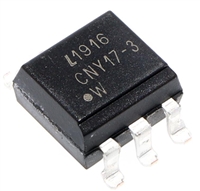ADSP-2183
When the BWCOUNT register is written with a nonzero value
the BDMA circuit starts executing byte memory accesses with
wait states set by BMWAIT. These accesses continue until the
count reaches zero. When enough accesses have occurred to create
a destination word, it is transferred to or from on-chip memory.
The transfer takes one DSP cycle. DSP accesses to external
memory have priority over BDMA byte memory accesses.
Table VI. Boot Summary Table
MMAP BMODE
Booting Method
0
0
BDMA feature is used in default mode
to load the first 32 program memory
words from the byte memory space.
Program execution is held off until all
32 words have been loaded.
The BDMA Context Reset bit (BCR) controls whether the
processor is held off while the BDMA accesses are occurring.
Setting the BCR bit to 0 allows the processor to continue opera-
tions. Setting the BCR bit to 1 causes the processor to stop
execution while the BDMA accesses are occurring, to clear the
context of the processor and start execution at address 0 when
the BDMA accesses have completed.
0
1
1
IDMA feature is used to load any inter-
nal memory as desired. Program execu-
tion is held off until internal program
memory location 0 is written to.
X
Bootstrap features disabled. Program
execution immediately starts from
location 0.
Internal Memory DMA Port (IDMA Port)
The IDMA Port provides an efficient means of communication
between a host system and the ADSP-2183. The port is used to
access the on-chip program memory and data memory of the
DSP with only one DSP cycle per word overhead. The IDMA
port cannot, however, be used to write to the DSP’s memory-
mapped control registers.
BDMA Booting
When the BMODE and MMAP pins specify BDMA booting
(MMAP = 0, BMODE = 0), the ADSP-2183 initiates a BDMA
boot sequence when reset is released. The BDMA interface is
set up during reset to the following defaults when BDMA boot-
ing is specified: the BDIR, BMPAGE, BIAD and BEAD regis-
ters are set to 0, the BTYPE register is set to 0 to specify
program memory 24 bit words, and the BWCOUNT register is
set to 32. This causes 32 words of on-chip program memory to
be loaded from byte memory. These 32 words are used to set up
the BDMA to load in the remaining program code. The BCR
bit is also set to 1, which causes program execution to be held
off until all 32 words are loaded into on-chip program memory.
Execution then begins at address 0.
The IDMA port has a 16-bit multiplexed address and data bus
and supports 24-bit program memory. The IDMA port is
completely asynchronous and can be written to while the
ADSP-2183 is operating at full speed.
The DSP memory address is latched and then automatically
incremented after each IDMA transaction. An external device
can therefore access a block of sequentially addressed memory
by specifying only the starting address of the block. This in-
creases throughput as the address does not have to be sent for
each memory access.
The ADSP-2100 Family Development Software (Revision 5.02
and later) fully supports the BDMA booting feature and can
generate byte memory space compatible boot code.
IDMA Port access occurs in two phases. The first is the IDMA
Address Latch cycle. When the acknowledge is asserted, a 14-
bit address and 1-bit destination type can be driven onto the bus
by an external device. The address specifies an on-chip memory
location; the destination type specifies whether it is a DM or
PM access. The falling edge of the address latch signal latches
this value into the IDMAA register.
The IDLE instruction can also be used to allow the processor to
hold off execution while booting continues through the BDMA
interface.
IDMA Booting
The ADSP-2183 can also boot programs through its Internal
DMA port. If BMODE = 1 and MMAP = 0, the ADSP-2183
boots from the IDMA port. IDMA feature can load as much on-
chip memory as desired. Program execution is held off until on-
chip program memory location 0 is written to.
Once the address is stored, data can either be read from or
written to the ADSP-2183’s on-chip memory. Asserting the
select line (IS) and the appropriate read or write line (IRD and
IWR respectively) signals the ADSP-2183 that a particular
transaction is required. In either case, there is a one-processor-
cycle delay for synchronization. The memory access consumes
one additional processor cycle.
The ADSP-2100 Family Development Software (Revision 5.02
and later) can generate IDMA compatible boot code.
Bus Request and Bus Grant
Once an access has occurred, the latched address is automati-
cally incremented and another access can occur.
The ADSP-2183 can relinquish control of the data and address
buses to an external device. When the external device requires
access to memory, it asserts the bus request (BR) signal. If the
ADSP-2183 is not performing an external memory access, then
it responds to the active BR input in the following processor
cycle by:
Through the IDMAA register, the DSP can also specify the
starting address and data format for DMA operation.
Bootstrap Loading (Booting)
The ADSP-2183 has two mechanisms to allow automatic load-
ing of the on-chip program memory after reset. The method for
booting after reset is controlled by the MMAP and BMODE
pins as shown in Table VI.
• three-stating the data and address buses and the PMS, DMS,
BMS, CMS, IOMS, RD, WR output drivers,
• asserting the bus grant (BG) signal, and
• halting program execution.
REV. C
–9–
















 压敏电阻器在直流电路中的过压保护应用探讨
压敏电阻器在直流电路中的过压保护应用探讨

 电感耐压值及其与电感大小的关系
电感耐压值及其与电感大小的关系

 CNY17F光耦合器:特性、应用、封装、引脚功能及替换型号解析
CNY17F光耦合器:特性、应用、封装、引脚功能及替换型号解析

 DS1307资料解析:特性、引脚说明、替代推荐
DS1307资料解析:特性、引脚说明、替代推荐
